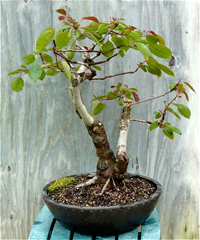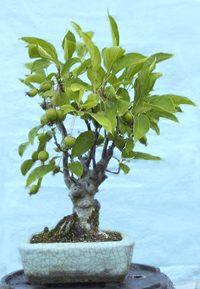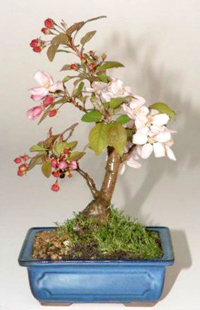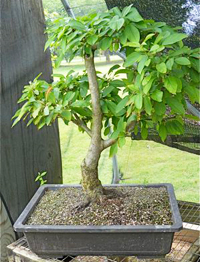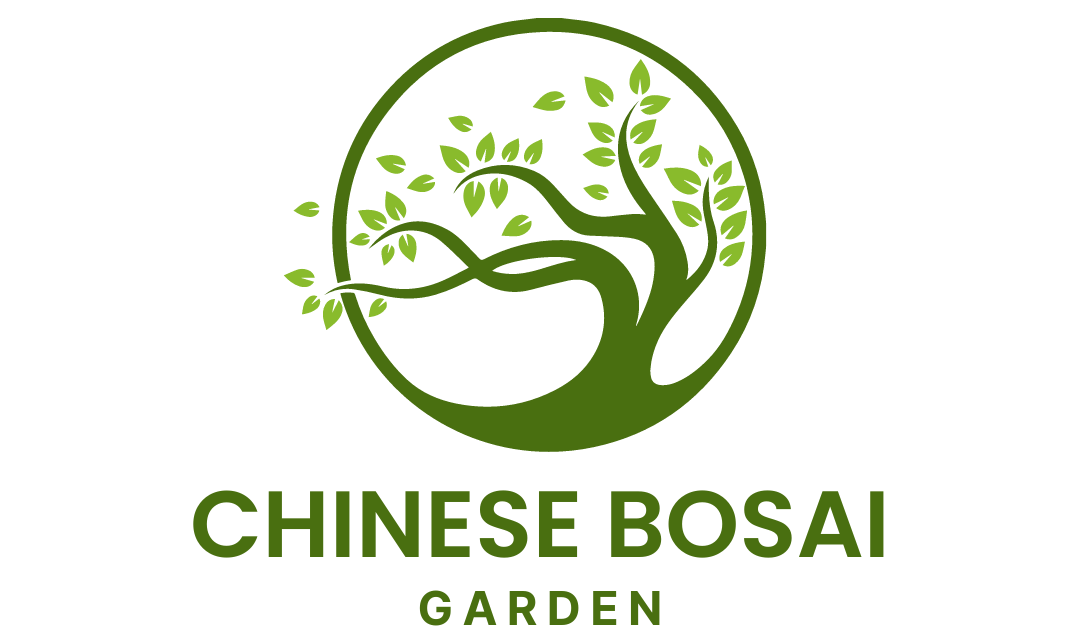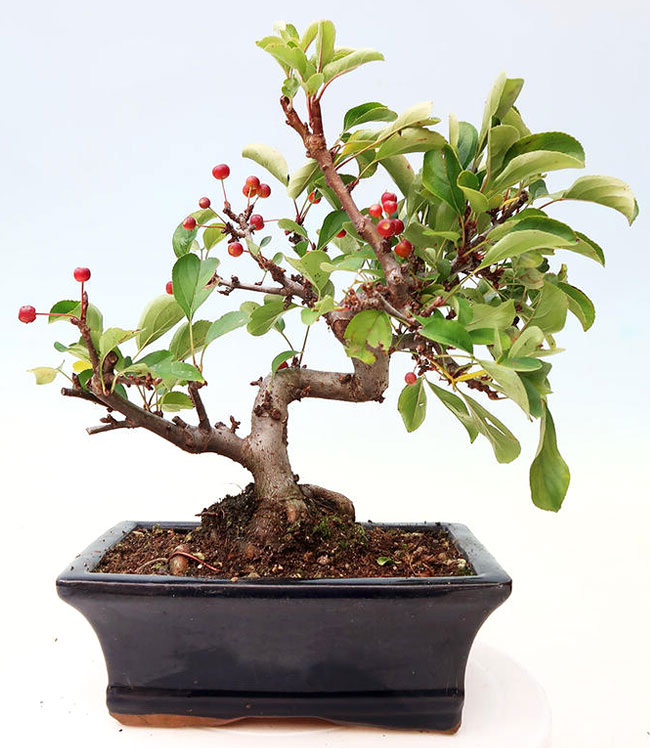
The Sargent Crabapple Bonsai Tree, scientific name Malus sargentii, is one of the most beautiful flowering trees for bonsai.
Crabapple trees are deciduous meaning they will lose their leaves in the winter. Malus consists of around 35 species with hundreds of different varieties of trees and shrubs. Most varieties bear lovely flowers and attractive, sometimes edible, fruit.
Sargent Crabapple bears showy white flowers and out of all species has the smallest leaves, making it perfect for bonsai.
Sargent Crabapple tree is easy to care for and is quite hardy. This is an outdoor tree that needs to be exposed to cold temperatures during winter.
Additional Information
Family: Rosaceae
Scientific name: Malus sargentii
Common Names: Sargent Crabapple, Sargent’s Crabapple, Malus Apples
Origin: Native to Japan.
Appearance: It has gray-brownish bark and small oval leaves. In the fall the foliage turns from green to shades of yellow, orange, and red.
Flowering: In early to mid-spring, Sargent Crabapple produces beautiful white, fragrant flowers that cover the entire tree. In summer, flowers are followed by little green apples that ripen to all different colors in the fall. Fruits stay throughout the winter.
Outdoor/Indoor Use: Outdoors.
Light Requirements: Prefers full sun to semi-shade. Protect it from the sun during the hot summer months.
Water Requirements: Requires daily watering during the growing season especially when fruiting. Needs less watering during winter. Do not allow the soil to dry out completely.
Pruning/Training: Pinch back new shoots to two leaves in the spring and late summer. Prune after blooming is over in the fall. Make sure to prune suckers as they appear. Leaf-cutting in the spring will help you reduce leaf size even more.
Bonsai Style: All styles except for broom, cascade, and formal upright.
Fertilizing: Feed with well-balanced bonsai fertilizer every two weeks after the blooming is over. Continue feeding until the end of the summer.
Repotting: This needs to be repotted every year in the late winter or early spring before buds develop. Sargent Crabapple soil with good drainage. Regular bonsai soil mix will work fine.
Hardiness: Grows best in the USDA Zones 4 – 8a. It needs to be exposed to cold temperatures so it can enter into “dormancy” which is a time of rest when the tree stops growing. Although it is a hardy plant, it needs to be protected from freezing temperatures.
Insects and Diseases: Crabapple trees are susceptible to a wide range of insects and diseases, including aphids, Japanese beetles, cedar-apple rust, apple crab, and powdery mildew. To avoid mildew provide good air circulation.
Propagation: By seeds or air-layering. Crabapple can be also propagated by grafting but it might leave a big noticeable scar on the bonsai tree.
Buy Sargent Crabapple Bonsai »
